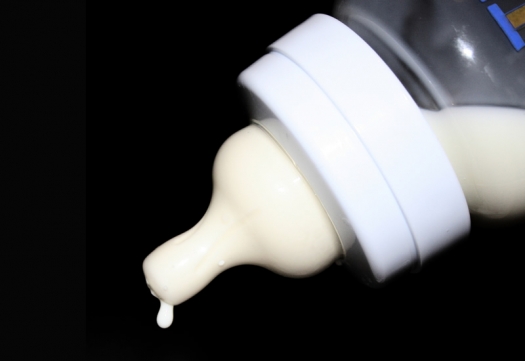BabyBottleDrippingMilk.jpg

Photo by Adam Davis, ©2007 / freeimages.com
The biggest concern parents have about making homemade formula is that it is based on raw milk which, according to medical orthodoxy, is a source of contamination and disease. The only possible way to protect our children, they say, is to be sure the milk is pasteurized.
The chart shown in the article Reported Outbreaks of Food Borne Illness was drawn up for a Los Angeles County Board of Supervisors vote on permitting raw milk in the County. (The vote was favorable, by the way, and raw milk is once again available in Los Angeles.) Except for a brief hiatus in 1990, raw milk has always been for sale commercially in California, usually in health food stores, although I can remember a period when it was even sold in grocery stores. Millions of people consumed commercial raw milk during that period and although the health department kept an eagle eye open for any possible evidence of harm, not a single incidence was reported. During the same period, there were many instances of contamination in pasteurized milk, some of which resulted in death. There have also been many instances of contamination of other foods, including baby formula. In fact, if we withdrew from the market every food type responsible for a case of food poisoning, there would be virtually nothing left to eat. But only raw milk has been singled out for general removal from the food supply.
Both raw and pasteurized milk harbor bacteria but the bacteria in raw milk is the healthy bacteria of lactic-acid fermentation while the bacteria in pasteurized milk is the bacteria of spoilage. And the overall bacteria count of milk produced under clean conditions is much lower than that of pasteurized milk. Both raw and pasteurized milk contain E. coli, normally a benign microorganism. The most likely source of the new strains of virulent E. coli is genetically engineered soy, fed to cows in large commercial dairies. If there is any type of milk likely to harbor these virulent breeds, it is commercial pasteurized milk.
Back in the days when scientists at our universities did real research, they compared the health of children fed raw or pasteurized milk. Children fed raw milk have more resistance to TB, scurvy, flu, diphtheria, pneumonia, asthma, allergic skin problems and tooth decay. In addition, their growth and calcium absorption was superior. (See: Abstracts on the Effect of Pasteurization on the Nutritional Value of Milk.)
Of course, as with all foods, raw milk must come from healthy cows and be carefully handled and stored. The same technology that we use to pasteurize our milk also allows us to keep raw milk fresh and clean. If you are buying directly from a farmer, be sure that the cows are mostly on pasture and that the barn is kept clean. The milk should go directly from the milking machine into a stainless steel tank or clean containers and be kept chilled. It should be used within a period of one week, after which it will begin to go sour (although it is not dangerous when it does so). With these precautions, raw milk is not only healthy but a safe food for all members of the family, even babies.
To find raw milk in your area, use our Real Milk Finder or contact your local chapter of the Weston A. Price Foundation.
This article appeared in the Fall 2001 edition of Wise Traditions, the quarterly journal of the Weston A. Price Foundation.
Learn more about The Safety of Real Milk from the Weston A. Price Foundation.
Originally published on A Campaign for Real Milk website. Used with permission.


